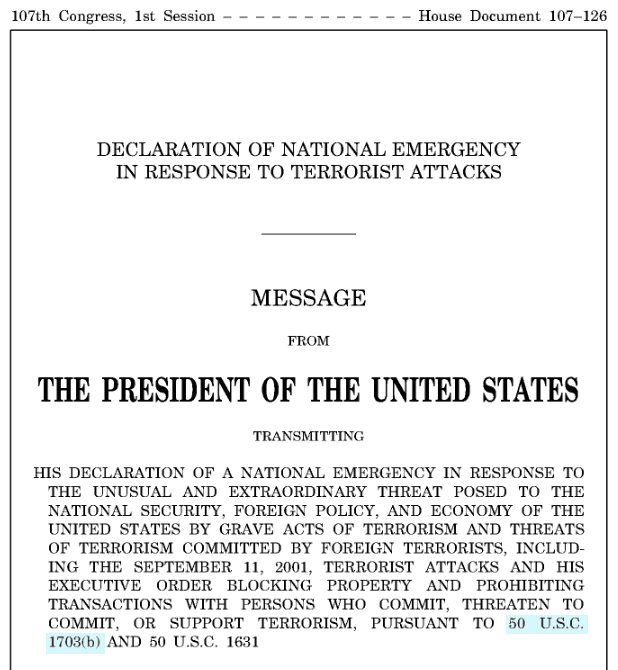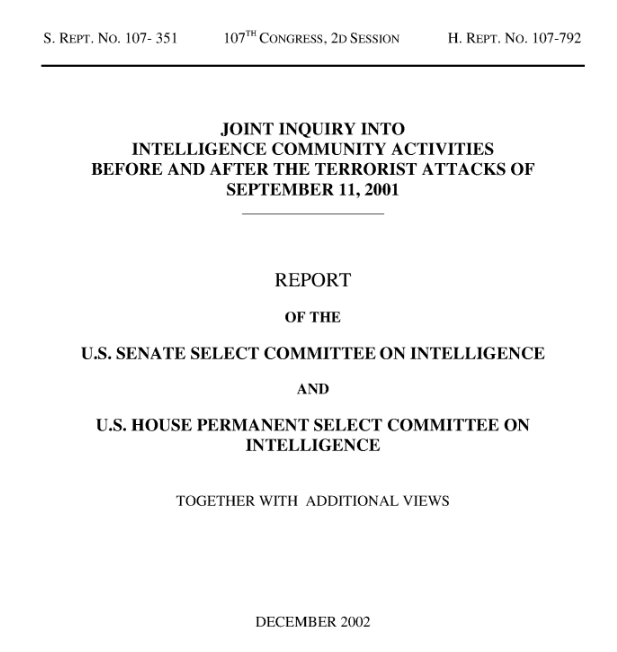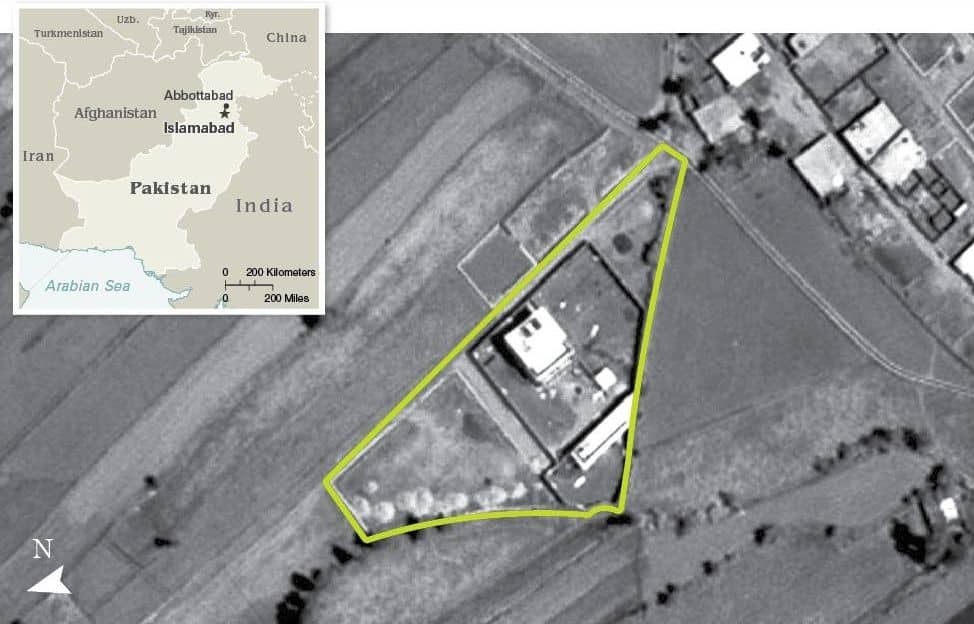This month, HeinOnline continues its Secrets of the Serial Set series with an exploration of the Intelligence Community’s successful operation to kill Osama bin Laden, the world-renowned terrorist responsible for the September 11 attacks on the United States.
Secrets of the Serial Set is an exciting and informative monthly blog series from HeinOnline dedicated to unveiling the wealth of American history found in the United States Congressional Serial Set. Join us each month to explore notable events in U.S. history using the primary sources themselves. Grab a seat and prepare to be blown away by what the Serial Set has to offer.
The U.S. Congressional Serial Set is considered an essential publication for studying American history. Spanning more than two centuries with more than 17,000 bound volumes, the records in this series include House and Senate documents, House and Senate reports, and much more. The Serial Set began publication in 1817 with the 15th Congress, 1st session. U.S. congressional documents prior to 1817 are published as the American State Papers.
The Serial Set is an ongoing project in HeinOnline, with the goal of adding approximately four million pages each year until the archive is completed. View the current status of HeinOnline’s Serial Set project below.
The Attacks of September 11
Overview of the Tragedy
On September 11, 2001, four domestic U.S. flights were hijacked by recruits from al-Qaeda, a global terrorist organization fueled by the belief that America was conspiring to eliminate Islam. Two of the flights were flown into the two towers of the World Trade Center in New York City, and one was flown into the Pentagon in Arlington, Virginia. The final plane crashed into a field in Pennsylvania (likely headed for the White House or the U.S. Capitol Building). Read more about the attacks in this blog post.
The four crashes caused the deaths of nearly 3,000 people in total, and injured more than 6,000 others. The man responsible for the tragedy was soon confirmed to be Osama bin Laden, the founder and then-leader of al-Qaeda. Inflamed by the belief that the U.S. government was immoral for its secular nature and supposedly anti-Muslim foreign policy, bin Laden had previously declared war on the United States five years earlier. Unfortunately, inadequate attention was paid to his threats, and bin Laden successfully orchestrated the deadliest terrorist attack in human history.
Investigating the Events
Two weeks after the attacks, President George W. Bush declared a national emergency regarding the threat of terrorism. A few days later, he addressed a joint session of Congress on the subject. While assuring the American people that “justice will be done,” Bush issued an ultimatum to the Taliban government of Afghanistan—give up Osama bin Laden (and other al-Qaeda leaders) or face war. In the following month, the United States invaded Afghanistan, officially beginning the “War on Terror.”

Over the next few months, several investigations were opened to identify the details of the September 11 attacks, and to determine whether they could have been prevented. In a joint inquiry, the U.S. Senate and House Intelligence Committees found that the intelligence community failed to act on significant information prior to the events of September 11. The declassified portions of the report discuss al-Qaeda’s plan for the attacks, as well as the extent of previous covert action against bin Laden.

In Pursuit of Justice
A Decade-Long Manhunt
Amidst the chaos of war in the Middle East, bin Laden continued to spout anti-American sentiments, recruit al-Qaeda members, and plot new attacks, all while managing to avoid capture. His frequent threats via letters, radio addresses, and television appearances led both the Bush and Obama administrations to repeatedly extend the original national emergency declaration (as demonstrated in these reports).
For ten years, the U.S. intelligence community searched for bin Laden’s hiding place. Finally, in the summer of 2010, something led intelligence officials to a large compound in Abbottabad, Pakistan, though accounts differ on where the lead originated. Some claim that it stemmed from years of investigation beginning with the smallest of clues, unearthed in 2002. Others argue that a former Pakistani intelligence officer offered to reveal bin Laden’s hiding place to U.S. officials in exchange for a $25 million reward.
Casing the Abbottabad Compound
Regardless of how it was discovered, this compound in Abbottabad seemed a likely hiding place for the terrorist leader. To confirm and devise a plan, an unprecedented intelligence collection effort was initiated, necessitating the cooperation of multiple U.S. government agencies as well as tens of millions of dollars.
For months, CIA agents watched the compound from their own rented home in the city, while drones photographed aerial views from above. The entire compound was discovered to be surrounded by a concrete wall, close to 20 feet tall and laden with barbed wire along its top. Suspiciously, another seven-foot wall shielded the third-floor balcony from view, creating a perfect hideout for the world’s most wanted man.

Drone footage helped the National Geospatial-Intelligence Agency (NGA) to create a model of the compound, assess the number of individuals inside (as well as their respective heights and genders), and analyze the movement patterns of those within. This information (along with other intel) led U.S. officials to determine with near-certainty that Osama bin Laden was inside.
The next step was to determine the plan of attack—a helicopter raid, the use of stealth bombers, and cooperation with Pakistani forces were all open for consideration. Ultimately, out of concern that the operation would be exposed, President Obama went with the stealthier option of a helicopter raid. After a team of Navy SEALs (and a dog named Cairo) had been selected, a full-scale version of the compound was built in North Carolina. The SEALs performed multiple practice runs into the spring, while other officials planned backup scenarios and assessed the legality of the mission behind the scenes. Finally, with the agreement of his advisers (yet with opposition from Vice President Joe Biden), President Obama gave the final go-ahead on April 29.
Operation Neptune Spear
On May 1, 2011 (May 2 in Pakistan), CIA operatives shut off the power to the compound’s neighborhood. The mission team flew into the country in two Black Hawk helicopters as Obama and his advisers watched with bated breath from the Situation Room. The first helicopter barely made it over the compound wall, grazing the concrete and soft-crashing inside the compound. The other helicopter landed outside the compound, and the SEALs climbed the walls to get inside.
Two dozen SEALs (and Cairo) used explosives to burst into the pitch-black house. Equipped with night-vision goggles, the team cleared each floor, restraining women and children, recovering weapons, and clearing barricades as they went. They found Osama bin Laden in an upstairs bedroom. Though reports are conflicting about whether the terrorist was armed, the SEALs shot him in the head and chest, killing him instantly. After months of planning and rehearsal, the raid was finished in 38 minutes. Following positive identification of the body, Osama bin Laden was buried at sea.
The Aftermath of the Assassination
That evening, Obama appeared on the television screens of Americans around the country to announce the news, reassuring the victims of bin Laden’s actions that justice had been done.
Since the operation, journalists and other third parties have requested the release of evidence of bin Laden’s death under the authority of the Freedom of Information Act. It was ultimately held that the Department of Defense was not required to release such proof.
Intelligence programs and operations, including Operation Neptune Spear, were later analyzed by this report from the Senate Select Committee on Intelligence.

Help Us Complete the Project
If your library holds all or part of the Serial Set, and you are willing to assist us, please contact Shannon Hein at 716-882-2600 or shein@wshein.com. HeinOnline would like to give special thanks to the following libraries for their generous contributions which have resulted in the steady growth of HeinOnline’s U.S. Congressional Serial Set.
- Wayne State University
- University of Utah
- UC Hastings
- University of Montana
- Law Library of Louisiana
- George Washington University
- University of Delaware
We will continue to need help from the library community to complete this project. Download this Excel file to see what we’re still missing.
Never miss a post!
Subscribe today to receive our Secrets of the Serial Set right in your inbox.



